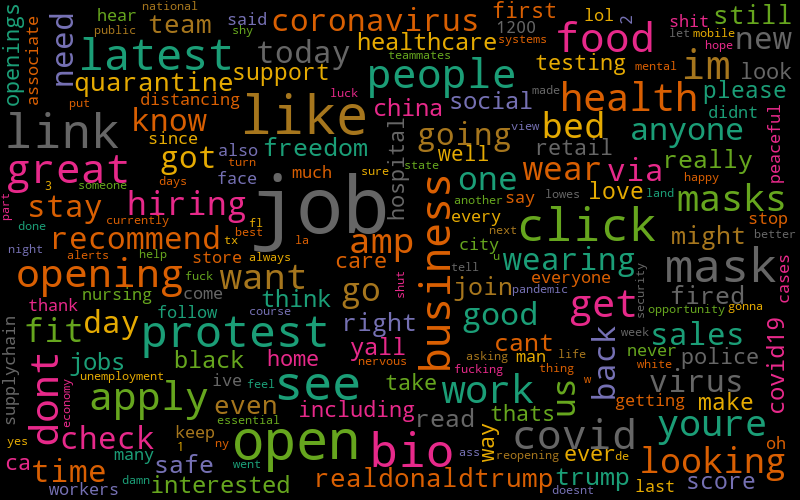HNDS-I: A Data Visualization Tool for the Covid-19 Online Prevalence of Emotions in Institutions Database.

Image depicts word cloud results of geolocated Twitter data on COVID-19 pandemic in June 2020. Using approximately 245 keywords, these findings were identified by the DS3 team during data collection.
The Data Science for the Social Sciences (DS3) lab secured funding for the HNDS-I: A Data Visualization Tool for the Covid-19 Online Prevalence of Emotions in Institutions Database from the National Science Foundation. Developing this tool allows us to contribute toward broadening research participation from the social sciences for a big data social media resource, Covid-19 Online Prevalence of Emotions in Institutions Database (COPE-ID). This data visualization tool will ensure that processing big data is possible for all academic communities. As such, we will provide a blend of analytical techniques in the tool, such as a dashboard overview featuring top visual analytic techniques, topic modeling, and useful features for text, content, or qualitative analysis, such as calculating real-time inter-rater reliability.
Users will be able to apply topic modeling to their studies as well as drawdown random samples of data applicable for research questions related to affect, behavior, and cognition as discussed in social media posts across ten platforms. In doing so, social scientists will be able to better apply theories of human behavior to the COVID-19 pandemic where the role of human behavior has been largely absent from the larger body of literature on the pandemic compared to other research topic areas. We hope to improve accessibility and the use of COPE-ID while providing associated tools and methods to advance social media researchers’ ability to process large volumes of user-generated big data using a variety of data science methods alongside the ability to process qualitative samples of the data.
Enter your email address to subscribe to this blog and receive notifications of new posts by email.
